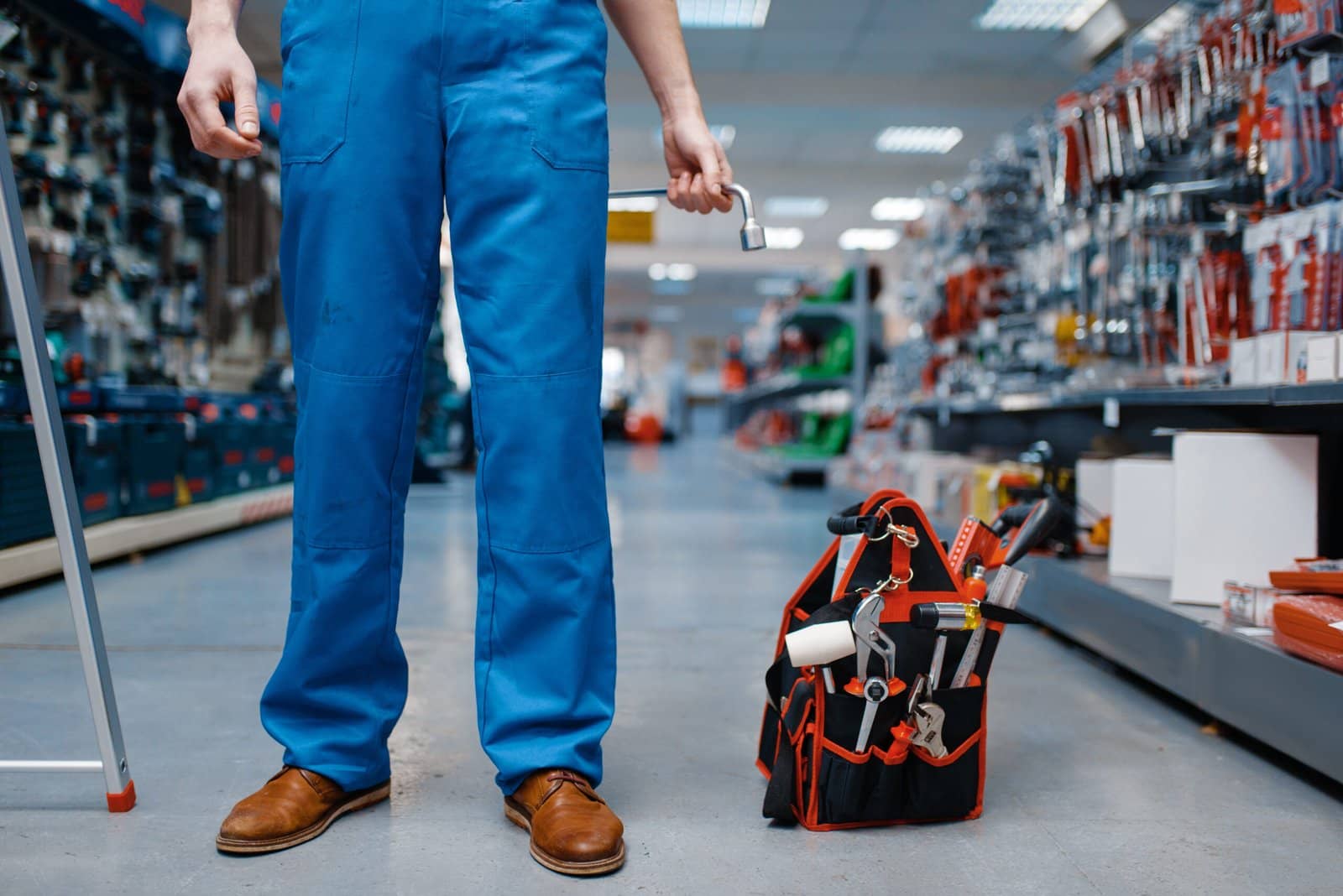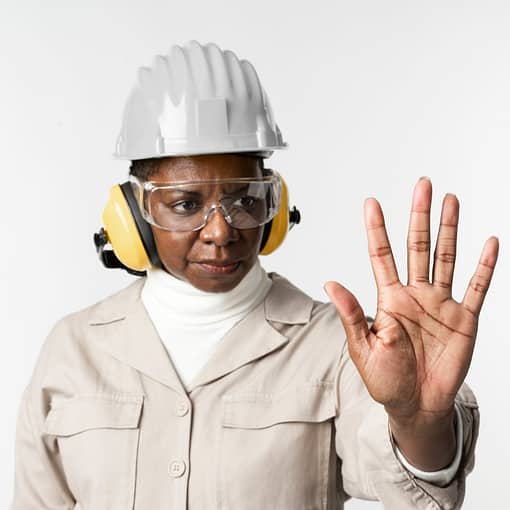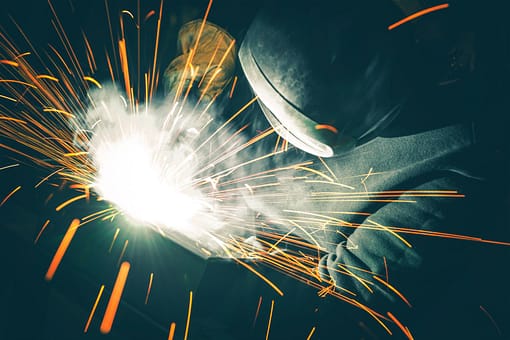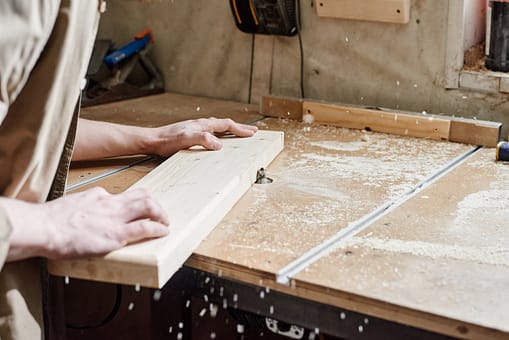You might have a hammer, a screwdriver, and maybe a wrench, but do you have all the essential tools needed for every task? From simple repairs around the house to ambitious DIY projects, having the right tools in your toolbox can make all the difference. In this article, we’ll explore a range of tools that should be in everyone’s toolbox, whether you’re a seasoned handyman or just starting out. So get ready to upgrade your toolbox and be prepared for any job that comes your way.
When it comes to tackling DIY projects or even simple household repairs, having the right tools in your toolbox can make all the difference. Whether you’re a seasoned handyman or just starting out, there are a few basic hand tools that should always have a place in your toolbox. These tools will be your go-to items for many tasks, so let’s take a closer look at them.
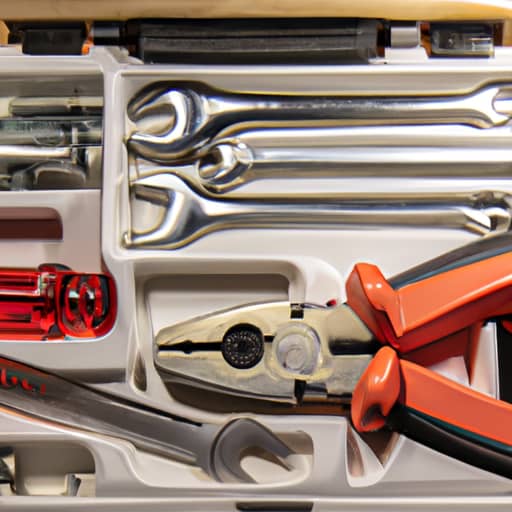
Hammer
A hammer is an essential tool that every toolbox should have. Whether you need to hang a picture, drive in a nail, or remove a stubborn nail, a good quality hammer is a versatile tool that you’ll frequently reach for. Look for a hammer with a comfortable grip and a sturdy head that will withstand repeated use. Depending on your needs, you may prefer a claw hammer, which is ideal for removing nails, or a ball-peen hammer, which is useful for shaping metal.
Screwdriver
From assembling furniture to fixing loose screws, a screwdriver is another tool that you’ll find yourself using on a regular basis. It’s important to have a variety of screwdrivers in your toolbox, including both flathead and Phillips head screwdrivers. Flathead screwdrivers have a single, flat blade and are used for screws with a single slot, while Phillips head screwdrivers have a cross-shaped tip that fits into screws with a corresponding cross-shaped slot. Make sure to choose screwdrivers with comfortable handles and durable tips.
Pliers
Pliers are an incredibly useful tool when it comes to gripping, bending, or cutting different materials. They can be used for a wide range of tasks, such as holding objects in place, pulling out nails, or even stripping wires. There are various types of pliers available, including regular pliers, needle-nose pliers, and lineman’s pliers. Regular pliers have a curved jaw and are great for general use, while needle-nose pliers have a long, narrow jaw that allows for precise work. Lineman’s pliers have a built-in cutting edge and are ideal for electrical work.
Now that we have covered the basic hand tools, let’s move on to the measuring tools. These tools are crucial for ensuring accuracy in your projects and will save you from headaches caused by inaccurate measurements.
Tape Measure
A tape measure is an absolute must-have in any toolbox. Whether you’re measuring a piece of furniture or determining the length of a wall, a tape measure will help you get precise measurements. Look for a tape measure with a wide, sturdy blade and easy-to-read markings. It’s also helpful to choose one with both imperial and metric measurements, so you can work with any unit system.

Level
When it comes to hanging pictures, shelves, or even assembling furniture, a level is an essential tool. It helps you ensure that everything is straight and aligned, creating a professional-looking result. There are different types of levels available, including traditional bubble levels and digital levels. Traditional bubble levels have a glass tube filled with liquid and an air bubble, while digital levels use electronic sensors to determine the levelness of a surface. Choose one that suits your needs and preferences.
Square
A square is a versatile tool that is used for measuring right angles. It can be used for laying out or checking the squareness of corners, marking perpendicular lines, and ensuring accurate cuts. Squares come in different sizes and materials, such as aluminum or steel. Look for a square with clearly marked measurements and a sturdy construction.
Now that we have covered the measuring tools, let’s move on to the cutting tools. These tools will help you make precise and clean cuts in various materials.
Utility Knife
A utility knife, also known as a box cutter, is a handy tool for cutting through different materials. It can be used to open boxes, cut through cardboard, or even trim carpet. Utility knives often have retractable blades, allowing for safe storage and easy blade changes. Look for one with a comfortable grip and a durable blade that can be easily replaced.
Handsaw
For projects that require cutting through wood or other materials, a handsaw is an essential tool to have. Handsaws come in different sizes and types, such as crosscut saws for cutting across the grain and rip saws for cutting along the grain. Choose a handsaw with a sharp, well-balanced blade and a comfortable handle for optimal control and ease of use.
Scissors
Scissors may seem like a basic tool, but they are incredibly useful for a wide range of tasks. From cutting fabrics and paper to trimming flowers and plants, a good pair of scissors will come in handy time and time again. Look for scissors with sharp blades and comfortable handles that fit your hand well.
Now that we have covered the cutting tools, let’s move on to the fastening tools. These tools will help you secure materials together and ensure a sturdy and reliable result.
Screwdriver Set
While a single screwdriver is a handy tool to have, having a set of different screwdrivers will give you the flexibility to tackle a wider range of screws. Screwdriver sets typically come with various sizes and types of screwdrivers, allowing you to handle both flathead and Phillips head screws. Look for a set with high-quality screwdrivers that have comfortable grips and durable tips.
Wrench Set
A wrench set is another essential tool for fastening tasks. Whether you need to tighten a bolt or loosen a nut, having a range of wrench sizes will make your job much easier. Wrench sets usually include both open-end wrenches and combination wrenches, which have a closed-end on one side and an open-end on the other. Look for wrenches with a sturdy construction and easy-to-read size markings.

Nails and Screws
No toolbox is complete without a collection of nails and screws. These fasteners come in various sizes and types, so it’s helpful to have a variety on hand. Nails are commonly used for woodworking projects, while screws provide a more secure and adjustable fastening option. Make sure to choose nails and screws that are suitable for the materials you’re working with.
Now that we have covered the fastening tools, let’s move on to power tools. These tools are powered by electricity and can make your projects faster and more efficient.
Drill
A drill is a versatile power tool that can be used for drilling holes and driving screws. Whether you’re hanging shelves, installing a new door, or assembling furniture, a drill is an essential tool to have. Look for a drill with variable speed settings, a comfortable grip, and the option to switch between drilling and screwdriving modes.
Circular Saw
For cutting through larger pieces of wood or other materials, a circular saw is the tool of choice. It allows for quick and precise cuts, making it ideal for projects such as building decks or cutting plywood. Look for a circular saw with a sharp blade, a sturdy construction, and safety features such as a blade guard and a power-off switch.
Power Sander
If you’re working with wood, a power sander is a tool that will save you time and effort. It’s used for smoothing surfaces and removing old paint or varnish. Power sanders come in different types, including orbital sanders and belt sanders. Choose a power sander that is easy to handle, has variable speed settings, and comes with replaceable sanding pads.
Now that we have covered power tools, let’s move on to gardening tools. These tools are specifically designed for outdoor tasks and will help you maintain your garden or outdoor space.
Pruning Shears
Pruning shears, also known as secateurs, are essential for any gardener. They are used for trimming and shaping plants, cutting through small branches, and removing dead or damaged foliage. Look for pruning shears with sharp blades, a comfortable grip, and a locking mechanism for safe storage.
Shovel
A shovel is a versatile tool that is used for digging, moving soil, and transferring heavy materials. Whether you’re planting flowers, digging trenches, or clearing snow, a sturdy shovel is a must-have. Look for a shovel with a solid handle, a strong blade, and a comfortable grip.
Rake
A rake is a tool that is used for gathering leaves, grass clippings, or other debris. It’s also helpful for leveling soil or spreading mulch. Rakes come in different types, including leaf rakes and garden rakes. Choose a rake with sturdy tines and a durable handle that is comfortable to grip.
Now that we have covered gardening tools, let’s move on to plumbing tools. These tools will come in handy for any plumbing-related repairs or installations.
Pipe Wrench
A pipe wrench is a specialized tool that is used for gripping and turning pipes or fittings. It’s essential for tasks such as loosening or tightening pipe joints. Pipe wrenches come in various sizes, so make sure to have a few different sizes in your toolbox to accommodate different pipe diameters. Look for pipe wrenches with durable jaws, a comfortable handle, and an adjustable mechanism for easy operation.
Plunger
A plunger is a simple yet effective tool for unclogging drains or toilets. It uses suction to create pressure and dislodge blockages. Make sure to have both a sink plunger and a toilet plunger in your toolbox, as they have slightly different designs to accommodate different drain sizes. Look for plungers with a sturdy construction and a rubber cup that creates a tight seal.
Pipe Cutter
For more advanced plumbing projects, a pipe cutter is a useful tool to have. It allows you to cut pipes cleanly and accurately, ensuring a precise fit for pipe connections. Pipe cutters are available in different types, including tube cutters and ratcheting cutters. Choose a pipe cutter that is suitable for the pipe material and size you’re working with.
Now that we have covered plumbing tools, let’s move on to electrical tools. These tools are specifically designed for working with electrical systems and will help you safely complete electrical projects.
Wire Strippers
Wire strippers are essential tools for anyone working with electrical wiring. They are used to remove the outer insulation from electrical wires, exposing the conductive metal strands. Wire strippers typically have multiple cutting and stripping slots to accommodate different wire sizes. Look for wire strippers with sharp cutting edges, easy-to-read markings, and comfortable handles.
Voltage Tester
A voltage tester is a valuable tool for checking whether an electrical circuit is live or not. It helps you ensure that you’re working with a safe electrical system. Voltage testers come in different types, including non-contact testers and probe testers. Non-contact testers detect voltage without making contact with the electrical wires, while probe testers require direct contact. Choose a voltage tester that suits your needs and provides accurate readings.

Multimeter
A multimeter is a versatile tool that combines several functions in one device. It can be used to measure voltage, current, resistance, and continuity. Multimeters are ideal for troubleshooting electrical problems and ensuring accurate measurements. Look for a multimeter with a clear LCD display, a wide range of measurement options, and safety features such as overload protection.
Now that we have covered electrical tools, let’s move on to painting tools. These tools will help you achieve professional-looking paint finishes and make your painting projects a breeze.
Paintbrush Set
A set of paintbrushes is a must-have for any painting project. Different brushes are suitable for different tasks, such as cutting in edges, painting large surfaces, or creating fine details. Look for paintbrushes with high-quality bristles, comfortable handles, and a variety of sizes to suit your needs.
Roller and Tray
For painting large surfaces, a roller and tray are essential tools. They allow for quick and even paint application, saving you time and effort. Look for a roller and tray set with durable materials, a sturdy roller frame, and replaceable roller covers. It’s also helpful to choose a roller with different nap lengths to accommodate different surfaces.
Painter’s Tape
Painter’s tape is a handy tool for achieving clean and crisp paint lines. It’s used to mask off areas that you don’t want to paint, such as trim or adjacent walls. Look for painter’s tape that is easy to apply and remove, and that provides a tight seal to prevent paint bleed.
Lastly, let’s talk about safety equipment. Working with tools and undertaking DIY projects can be hazardous, so it’s important to have the right safety equipment to protect yourself.
Safety Glasses
Safety glasses are crucial for eye protection when working with tools or performing tasks that may produce flying debris or particles. Look for safety glasses that provide a comfortable fit, clear vision, and impact resistance. It’s also helpful to choose glasses with side shields for additional protection.
Work Gloves
Work gloves are essential for protecting your hands from cuts, abrasions, and other injuries. They provide a barrier between your skin and potentially harmful materials or sharp edges. Look for work gloves that fit well, provide good dexterity, and offer adequate protection for the specific tasks you’ll be performing.
Ear Protection
Working with power tools or in loud environments can damage your hearing over time. That’s why ear protection is crucial. There are different types of ear protection available, such as earplugs and earmuffs. Choose ear protection that fits comfortably, provides adequate noise reduction, and meets safety standards.
In conclusion, having the right tools in your toolbox is essential for any DIY enthusiast or homeowner. The basic hand tools, such as a hammer, screwdriver, and pliers, will be your go-to items for various tasks. Measuring tools, like a tape measure, level, and square, ensure accurate results. Cutting tools, such as a utility knife, handsaw, and scissors, allow for precise and clean cuts. Fastening tools, including a screwdriver set, wrench set, and nails and screws, help you secure materials together. Power tools, such as a drill, circular saw, and power sander, make your projects faster and more efficient. Gardening tools, plumbing tools, electrical tools, painting tools, and safety equipment all enable you to tackle specific tasks safely and effectively. So make sure to invest in a well-stocked toolbox to tackle any project that comes your way!
